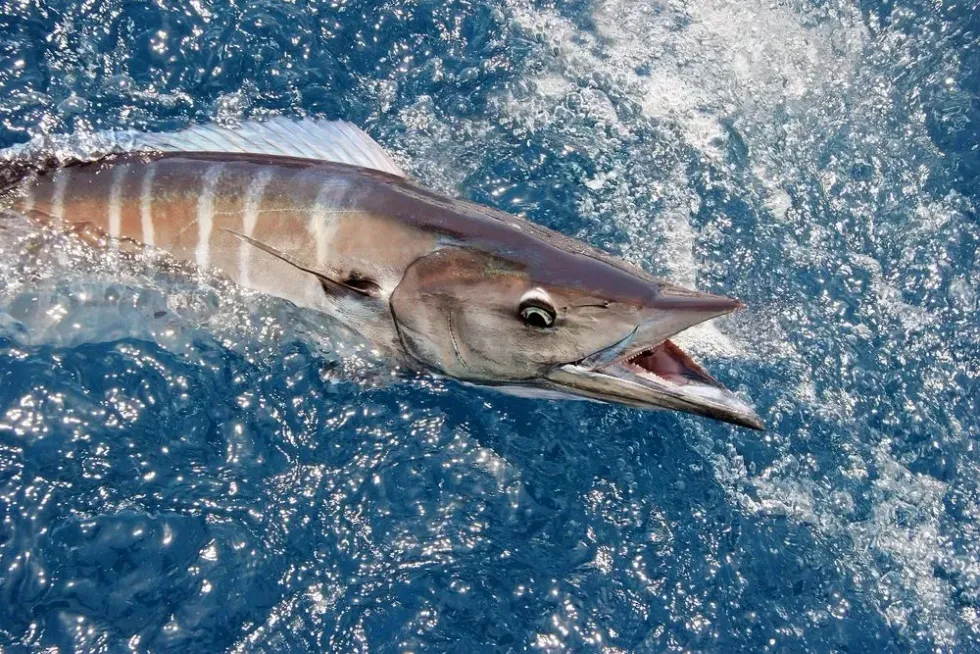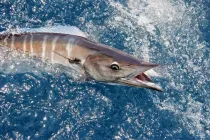The wahoo is a pelagic fish species that belongs to the family Scombridae. This pelagic fish is distributed throughout the world, and the highest concentrations of wahoo populations can be found in the waters of tropical and subtropical seas.
The wahoo (Acanthocybium solandri) is one of the most prized gamefish species in the world, as it is known in the sports fishing community and fishery management companies as one of the toughest fish to catch. This is particularly true for the sports fishing community in North America.
The wahoo which is found in the Atlantic, Indian, and Pacific Oceans, is known for its rapid speed in waters. It is also commonly found in the Gulf of Mexico.
This fish is also highly respected because of its incredible hunting abilities. In recent years, the wahoo's reputation has also increased because of its taste. Today, it is an important part of the local cuisines of places where it is found and is commonly caught.
If you are a fish enthusiast and would love to know more about the wahoo species, you are exactly where you need to be! In this Kidadl article, we'll take you through all the wahoo facts that you could possibly want to know.
Included in this article is information such as the wahoo's diet including squid, how wahoo fish catch squid, wahoo in the north and south Atlantic Ocean, wahoo caught fishing, the life of a wahoo, wahoo speed related to swimming, and tips for fishing wahoo.
For more awesome facts-based articles right here on Kidadl, check out the bonito fish and barb.
Wahoo Interesting Facts
What type of animal is a wahoo?
The wahoo is a fish and in the same family as Spanish mackerel and tuna.
What class of animal does a wahoo belong to?
The wahoo belongs to a class of animals known as fish.
How many wahoos are there in the world?
The world's total wahoo species population is not exactly known. However, as it has the Least Concern conservation status, it is safe to say that the wahoo species is not a threatened species.
Where does a wahoo live?
Wahoos live in subtropical and tropical seas and oceans.
What is a wahoo's habitat?
Most wahoos live in subtropical and tropical seas and oceans. However, they are not known for swimming at great depths in their ocean environment which indicates that they have a limited range.
Throughout most of their lives, they live near the surface of the ocean water as they are pelagic fish. The heaviest concentrations of wahoo populations are found in the areas that are just off the coast, not in deep seas. This is more proof of their restricted range.
Who do wahoos live with?
This species live mostly on their own. However, in their preferred habitats during the breeding season, they also live with other wahoos.
How long does a wahoo live?
On average, wahoos live for five to six years.
How do they reproduce?
The wahoo species reproduces multiple times throughout their spawning seasons and every year, wahoo females deliver millions of eggs. While most wahoos live solitary lives, during the mating season, they form groups.
Their spawning technique, referred to as broadcast spawning, involves females releasing their respective eggs and males releasing their respective sperms. This technique increases the likelihood of the fertilization of eggs, and also ensures that not all fertilized eggs are consumed by predators.
What is their conservation status?
The conservation status of wahoos is Least Concern.
Wahoo Fun Facts
What do wahoos look like?
The wahoo species has an iridescent blue dorsal side and a silvery-white ventral side, accompanied by its flanks, which feature irregular blue stripes. A wahoo's mouth is incredibly large which allows it to capture and consume its prey comfortably.
With a closed mouth, the wahoo species has a skin fold that covers its mandible. This is one of the wahoo's most unique features and this feature is what makes the wahoo unique in comparison to other types of mackerel such as the Indo-Pacific narrow-barred Spanish mackerel, Atlantic king mackerel, and Spanish mackerel.
Wahoos boast two dorsal fins, with one being as large as half the wahoo's body.
Its posterior dorsal fin is curvy and has a unique appearance. The ventral and dorsal sides have multiple small finlets which is something that this species shares with other Spanish mackerels and tunas.

* Please note that this is an image of a bonito, a member of the same family as the wahoo. If you have an image of a wahoo please let us know at hello@kidadl.com.
How cute are they?
If you are a fish enthusiast, you may find wahoos cute. However, if you aren't much of a fish lover, you aren't very likely to find the wahoo cute.
In fact, wahoos are considered as one of the best hunters in the seas, and the fact that they tend to be aggressive makes it even more unlikely for them to be seen as cute by anybody. As we said before, if you are someone who is an admirer of fish, you will definitely love a wahoo.
How do they communicate?
Very little is known about how wahoos communicate with one another and also with other creatures in the sea. However, the fact is that they do communicate as there is no other explanation as how hundreds of wahoos, both male and female, congregate in the waters during the spawning season.
How big is a wahoo?
Wahoos are among the biggest fish. Adult wahoos are typically around 7 ft (213.36 cm) long, and they are also quite dense which explains why each wahoo weighs nearly 180 lb (81.6 kg) or more.
In comparison to a standard Spanish mackerel, which has a length of 3 ft (91.44 cm), a wahoo is at least two to three times bigger.
How fast can a wahoo swim?
Wahoos are incredibly fast swimmers and can reach a peak speed of more than 47 mph (75.6 kph). This fast speed makes it hard for these fishes to be caught.
How much does a wahoo weigh?
On average, adult wahoos weigh around 180 lb (81.6 kg).
What are the male and female names of the species?
There are no gender specific names for male and female wahoos.
What would you call a baby wahoo?
There are no specific names for baby wahoos, so you can just refer to them as baby wahoos.
What do they eat?
Wahoos are excellent predators and they tend to eat smaller fish such as anchovies. Common cuttlefish and squid are also common prey for wahoos to hunt and eat.
Are they dangerous?
Yes, since wahoos are classified as predatory fish, they are extremely dangerous. They are very swift in the water and it does not take them a long time to rip their victims in the waters to shreds.
They also have very few predators in the wild. However, their predators are among the largest fish, including the bluefin tuna and the great white shark.
Would they make a good pet?
Wahoos are extremely large fish and if you want to keep one as a pet, you will have to arrange for an aquarium that can accommodate the creature. In addition to that, you will also need to provide squid and other small fish to your wahoo on a regular basis, which can become troublesome.
We recommend appreciating the wahoo from afar, as it is one of the most aggressive fish out there.
Did you know...
Wahoos are treasured by commercial fisheries. As wahoos are incredibly difficult to catch, commercial fisheries earn a lot of money by capturing them and selling them to interested buyers.
However, this work of commercial fisheries has not had any effect on the wahoo population. As each wahoo female delivers more than a million eggs per spawning season, it's safe to say that the work of commercial fisheries and fishery management companies will not have much effect on the global wahoo population.
They have a mouth full of extremely sharp teeth.
Wahoos aren't the same as barracudas.
Is a wahoo high in mercury?
Each wahoo has around 0.4 ppm/Hg, which is considered a moderate-high mercury level.
Is a wahoo the same as mahi-mahi?
Mahi-mahi is also a very popular fish in tropical and subtropical regions and in some respects, it is similar to the wahoo. However, mahi-mahi is recommended for those who like their fish a little sweet. However, if you want more of a neutral flavor, we recommend opting for wahoos.
Here at Kidadl, we have carefully created lots of interesting family-friendly animal facts for everyone to discover! Learn more about some other fish from our pacific salmon facts and swai fish facts pages.
You can even occupy yourself at home by coloring in one of our free printable wahoo coloring pages.










